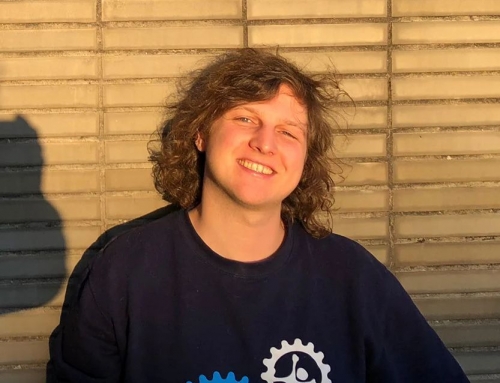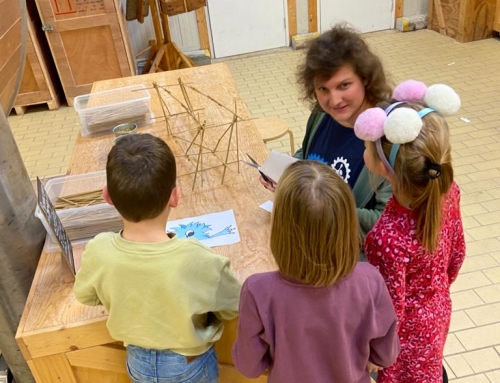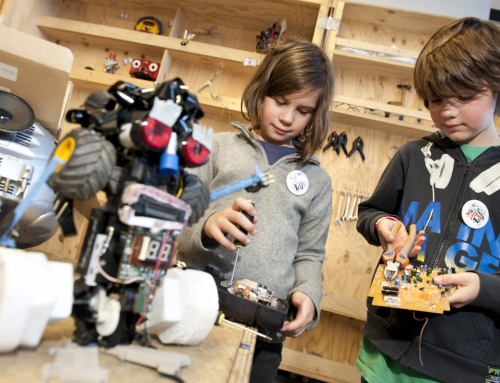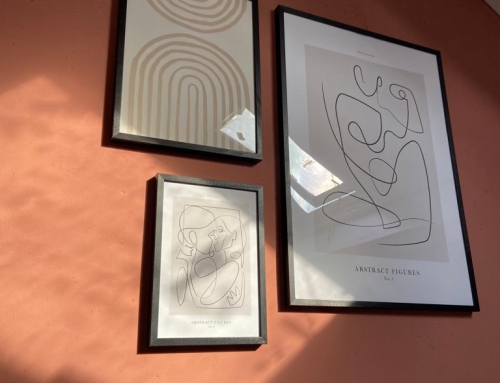Out-of-the-box thinking is a well-known phrase in creative thinking. Already from an early age, creative thinking should be stimulated in the development and growth of children. Called the 21st-century skills, primary schools are motivated to start teaching creative thinking from an early age. Not only physical creativity is needed, but also the creativity of thinking. Especially, in tackling the global challenges that we face now and in the upcoming decades. However, this stimulation of creative thinking often occurs in very uninspiring locations. The classroom, boardroom or office is not the place where new inspiring initiatives will emerge. That’s why I think that out-of-the-box thinking should happen out of the physical box. By taking away the limitations of a location, initiatives will emerge and new ways of thinking will be discovered.
What says the theory?
Physical space has a direct influence on the creativity of people. Bojer, McKay, Falk and Dierking all agree that the physical context is of crucial importance in the creation of new ideas, initiatives and experiences (Mapping Dialogue; A research project profiling dialogue tools and processes for social change, 2006) (The Museum Experience, 1992). The understanding of how physical space influences the thinking and creativity of people creates the possibility to adjust gatherings and creative sessions as well as possible.
Logically, the way how a facilitator moves, behaves and talks is the first thing people think about when judging a creative experience. Not for nothing, Bojer, McKay et al. call the facilitator itself the most important tool of a powerful session (2006). However, in personal experience, I have the feeling that the physical space is underestimated in its influence on the emergence of creativity. So, without further ado, let us dive into the importance of space in a creative session and its influence on the creative mind.
Dive deep into the topic
In a 2010 IBM survey of over 1.500 CEOs from various fields, researchers discovered that most CEOs considered creativity as an essential leadership quality. The need for innovation becomes bigger due to a globalized market, thus more difficult to distinguish a company solely on price or efficiency (Sayiner, 2015). Luckily, everyone is creative.
In my opinion, what an experience is designed to do, is to boost and discover existing creativity within a group or individuals. But what is creativity? Back in 1981, Frank Barron and David Harrington wrote about creativity and the definition of this word. Broadly, they described two meanings of the word “Creativity”. The first meaning is the art of creating a socially valuable product. The second meaning is creativity as being intrinsically valuable. Examples are; dreams, unexpressed thoughts or even the curiosity of a human being (Creativity, Intelligence and Personality, 1981). I take the second meaning of Creativity. I see creativity, not as the product, but I see the process of a product, idea, model, theory or invention as creativity. The product is just the conclusion of the creative process.
The six foundations of process design are in place to guide this creative procedure in the best way possible. And as said before, the physical space is one of those foundations.
But what makes a physical space contribute to experiencing change-making processes? And why?
As said in the paper; Mapping Dialogue, most conference-room setups are not designed to have a dialogue. It drains energy and it is not inviting for interaction. We all have had that feeling in classrooms. A teacher is in front of the class and we are more and more slumped on our chairs. Yawning and checking over and over if the meeting is almost finished. It is boring. Unfortunately, humans develop habits. So, we meet in the same boring setting, because at one point in history we decided that this was the way of working. This is an annoying and boring experience.
This can be done differently. By changing a habit, creativity will spark (MacDonald, 2020) (Cooper, 2018). While we as process designers cannot change the habit of the participants directly, we have the power and possibility to change the environment.
This is where one of the core strengths lies in changing the room. It breaks the habit. It breaks the normal way of working and gathering and conversing. Then the question arises: What will spark possible creativity in changing the room. Simply put, there are two answers.
First. Our mental space stands in direct proportion to our perception of physical space. Social psychologists researched this and created the Construal Level Theory. This theory explains the psychological distance and the extent to which people’s thinking is abstract or concrete. One subchapter describes the physical space on its own. It states that it is not only the mental distance one has to an object or idea that creates a more abstract way of thinking, but also the room in which you think of the object or idea is also of influence (Trope & Liberman, 2010). Luckily, people’s minds can be tricked into thinking that they are in a big space. Opening windows, having paintings of landscapes, or working with cold colours on the walls – which are proof that it tricks the mind into thinking the space is bigger – help create a feeling of space, even in a smaller environment (Rattner, 2017).
Secondly, put playful physical attributes somewhere in the room. Play can lighten up the mood, let us access our inner child and come up with emergent ideas. An unorthodox place with room to play will break the habits I talked earlier about. For example, Lego. Lego could help to visualize abstract ideas while playing. It brings us back to our youth when we still believed in fantasies, and creativity and were free of worries. The same goes when there is a different than normal set-up. Paper on the ground, writing on a wall, lack of chairs, everything that is different than usual. It helps us to create something impossible (Hanft, 2015).
Be F*cking Childish
Creativity is the most crucial aspect we have as mankind. It can develop and understand ourselves, the planet and the universe. In a way, you can say that creativity is limitless. However, we limit ourselves to boxes. Boxes to think in, boxes to work in and boxes to experience. While there is a lot of attention to out-of-the-box thinking, there is not enough attention to being out-of-the-box. Great thing is, that we all are able in being out of that box. When we were children, our imagination was limitless. That child is still in us. Meaning that the limitless imagination is there as well. Even better is that we can now link and explain our imagination. We have the vocabulary, skills and knowledge to use this imaginative creativity.
We need our inner child in challenging the world of tomorrow. As a child we hated being in a boring classroom, we hated being limited in our hut-building skills, we loved to be outdoors and we had the most amazing time in nature. We adored our Legos and toys, we created entire universes of stories, just out the top of our minds.
I think by changing our surroundings, or being able to change our surroundings, that inner child can be recalled. In the sessions that I will create as a social innovator, in my collaborations in future work, and by the teaching I do at the moment I support childish actions.
That brings me to my last message.
BE F*CKING CHILDISH!
References
Barron, F., & Harrington, D. M. (1981). Creativity, Intelligence and Personality. Santa Cruz: Department of Psychology, University of California.
Bojer, M., Knuth, M., Magner, C., McKay, E., & Roehl, H. (2006). Mapping Dialogue; A research project profiling dialogue tools and processes for social change. Johannesburg, South Africa.
Bojer, M., Knuth, M., Magner, C., McKay, E., & Roehl, H. (2006). Mapping Dialogue; A research project profiling dialogue tools and processes for social change. Johannesburg, South Africa.
Cooper, M. (2018, July 17). Creativity; Breaking Old Habits for Breakthrough Creative. Opgehaald van Adobe: https://blog.adobe.com/en/2018/07/17/breaking-old-habits-for-breakthrough-creative.html#gs.lt0nyo
Falk, J., & Dierking, L. (1992). The Museum Experience. Washington DC: Whalesback Books.
Hanft, A. (2015, November 6). Ingredients of Creativity; The secrets of creative success are simple, they just aren’t very easy. Opgehaald van Adrian Haft: https://ade3.medium.com/ingredients-of-creativity-9f94cee9b3c0
MacDonald, A. (2020, March 28). Habits and Blocks to Creativity. Opgehaald van McQuaig: https://blog.mcquaig.com/habits-and-blocks-to-creativity
Rattner, D. M. (2017, June 2). How to Use the Psychology of Space to Boost Your Creativity; Environmental psychology points to some easy changes you should make to your home office. Opgehaald van How to Design Creative Workspaces According to Research: https://medium.com/s/how-to-design-creative-workspaces/how-to-use-the-psychology-of-space-to-boost-your-creativity-4fe6482ef687
Sayiner, S. (2015). Physical Space Drives Innovation: How the Environment Can Increase an Organization’s Productivity, Creativity, and Innovation. Intersect, 8(2). Opgehaald van https://ojs.stanford.edu/ojs/index.php/intersect/article/download/699/621/
Trope, Y., & Liberman, N. (2010). Construal-level theory of psychological distance. Psychological Review, 117(2), pp. 440-463. doi:10.1037/a0018963





